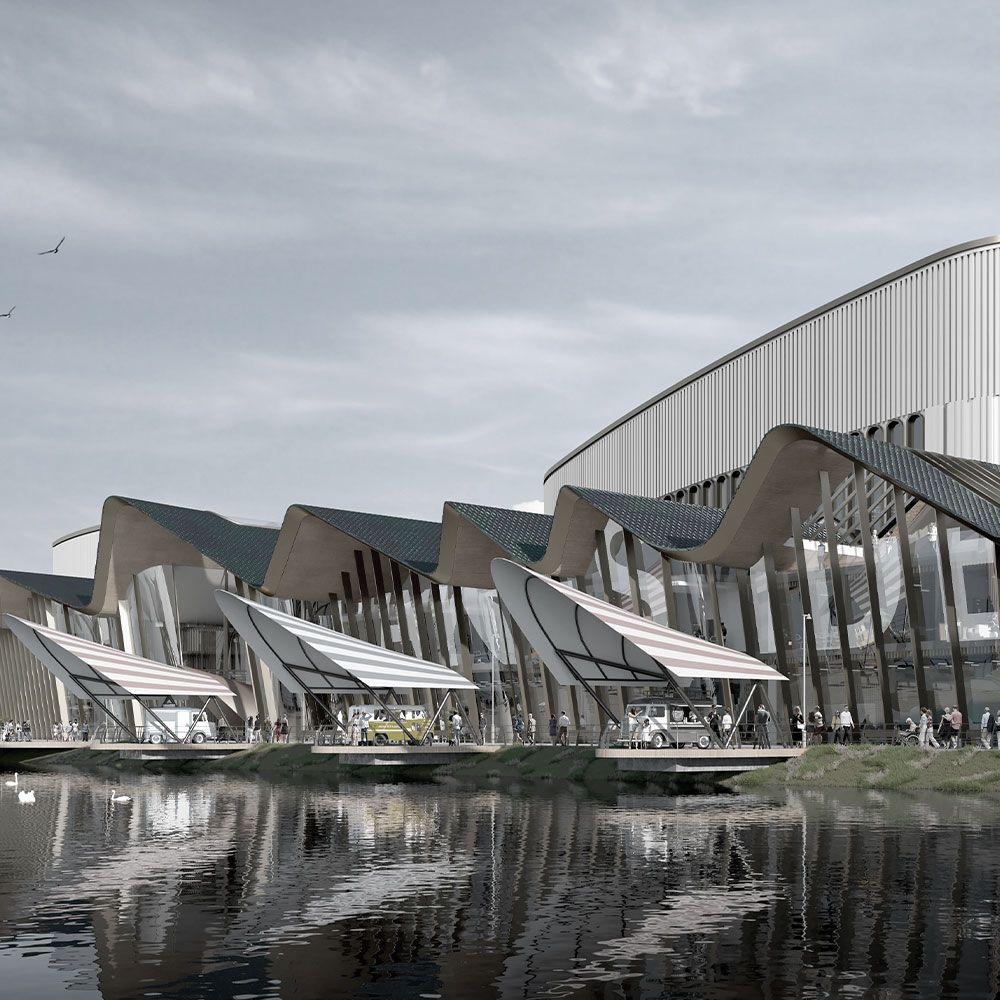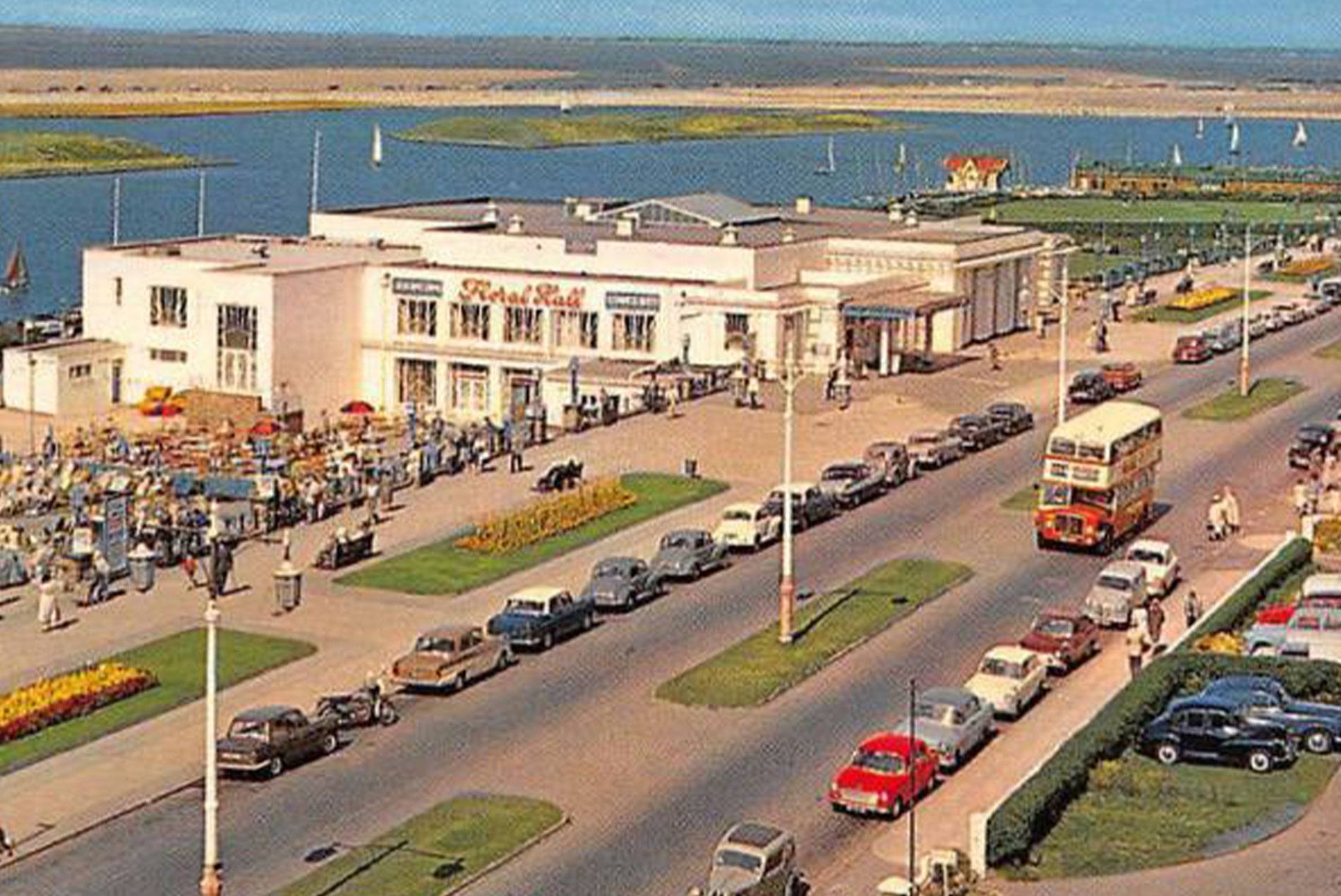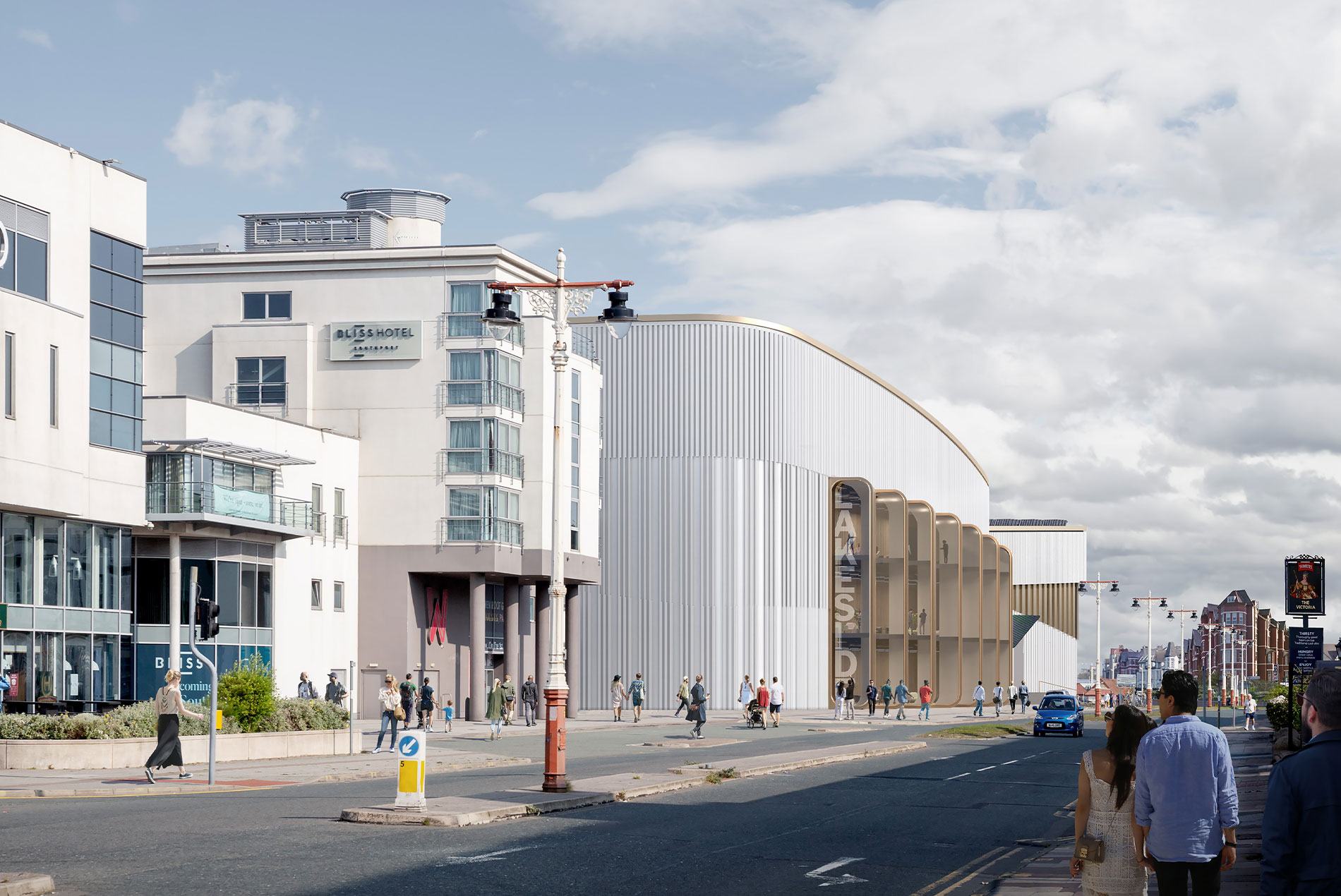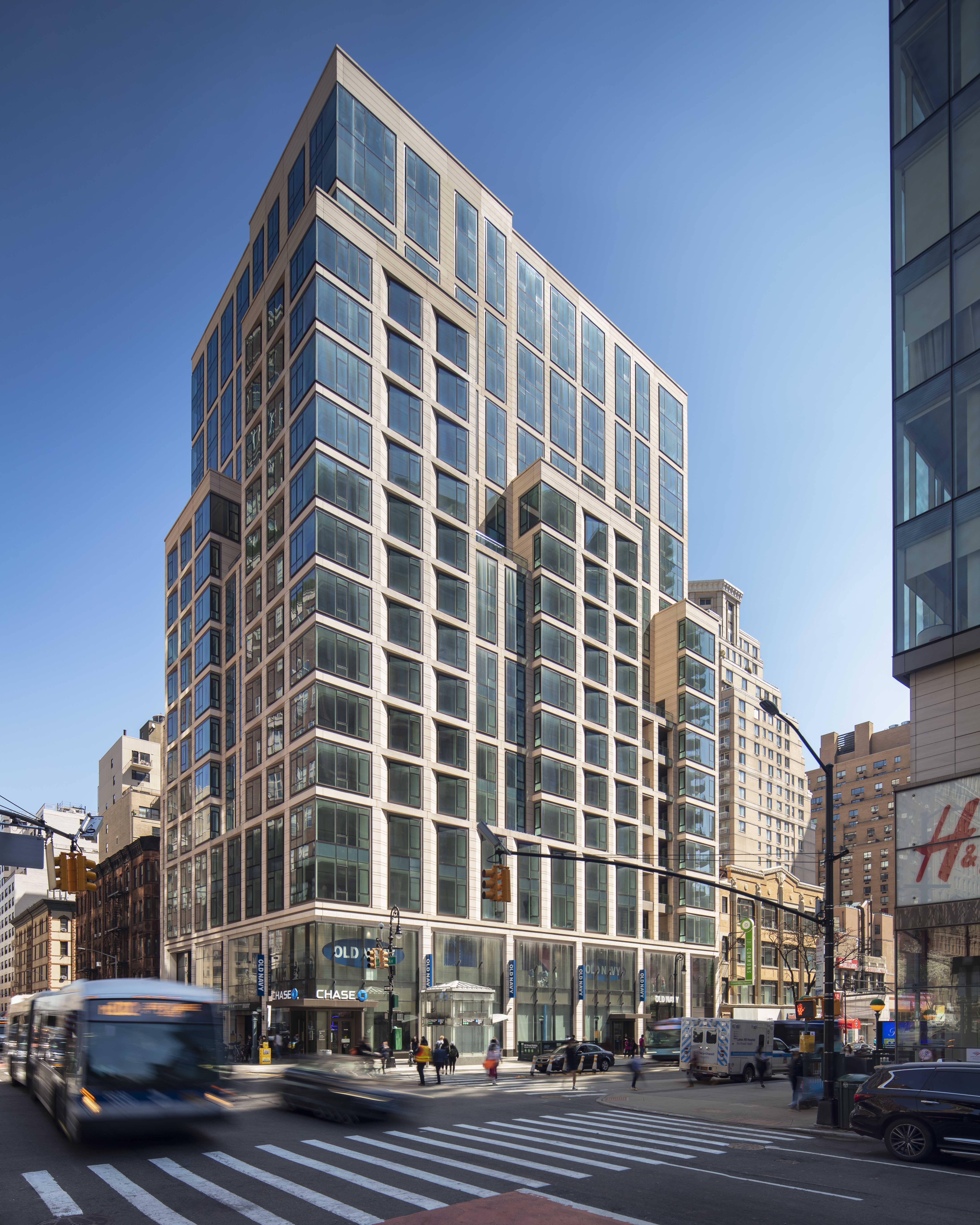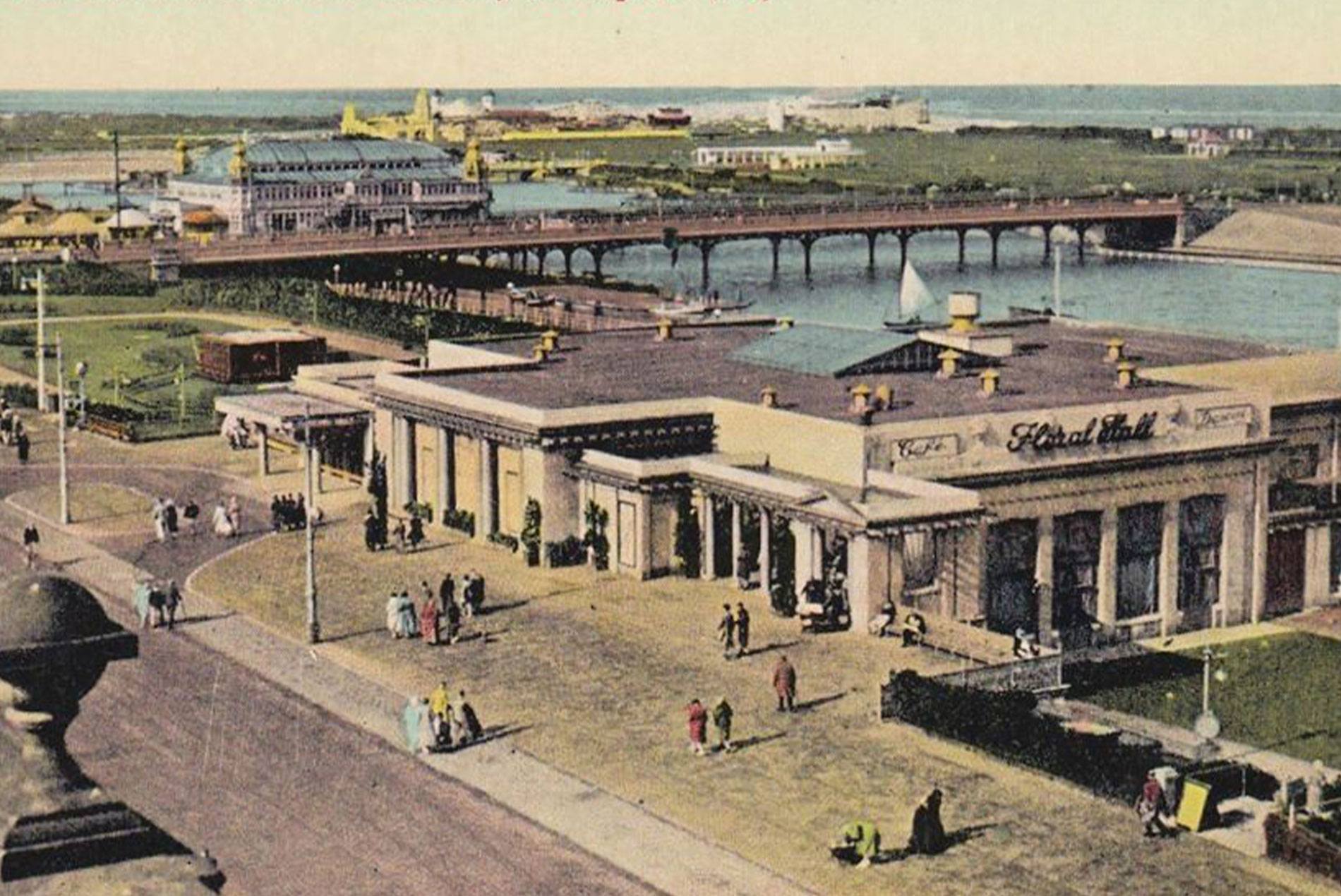
The current site is home to the iconic 1930s Floral Hall, a famous ballroom and a connected theatre added in 1973. The original flat-roofed brick building has a narrow footprint and few amenities.
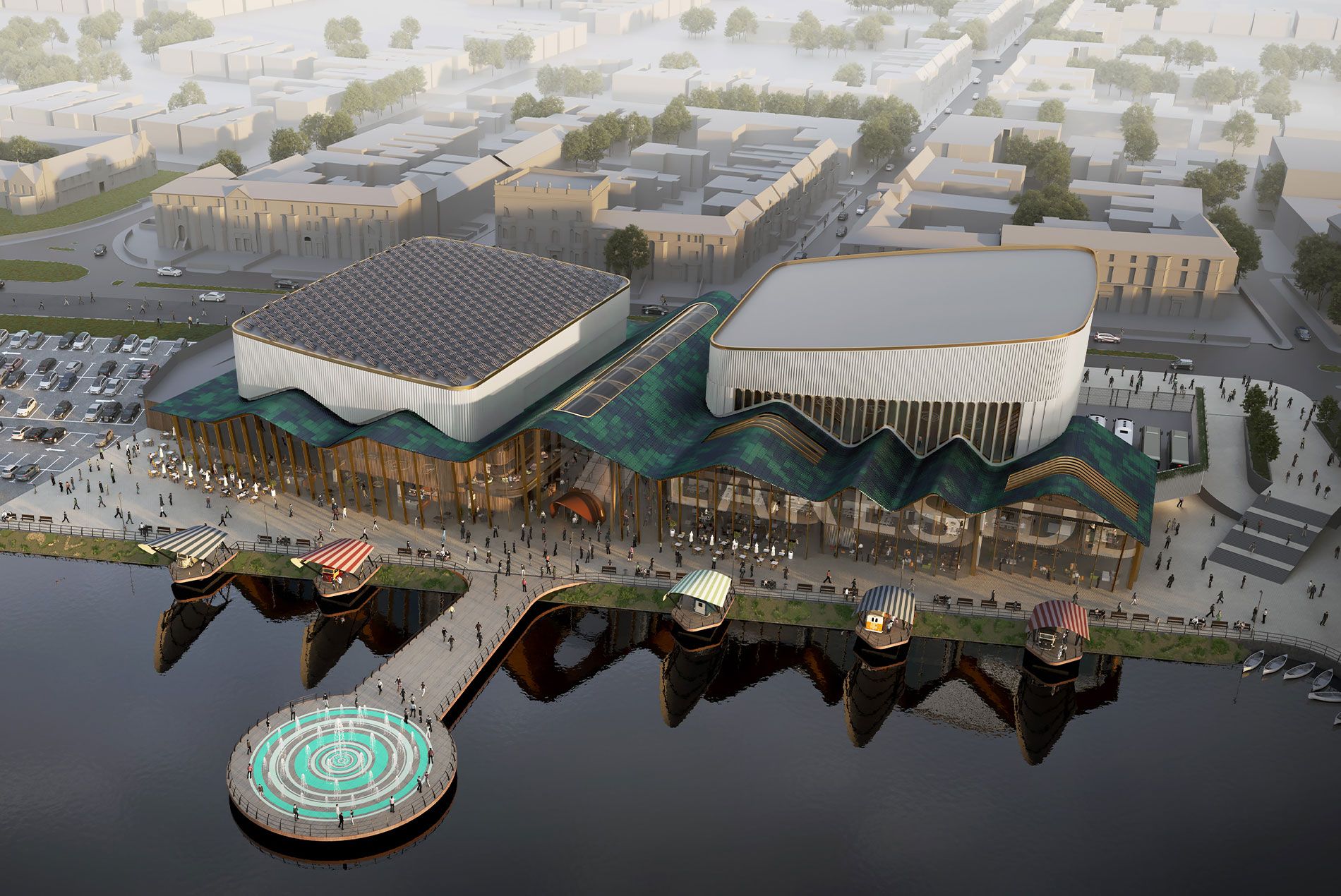
This new venue sits on a stunning site on the edge of Marine Lake. It will replace the current Southport Theatre and Convention Centre and become a year-round destination.
The design honors the building’s history with clean lines and Art Deco-inspired details. Yet the modern amenities and contemporary design look toward the future.
The architectural language speaks to both city and sea. The city-facing side has clean, ordered facade and geometric extrusions that communicate its place as a civic structure.
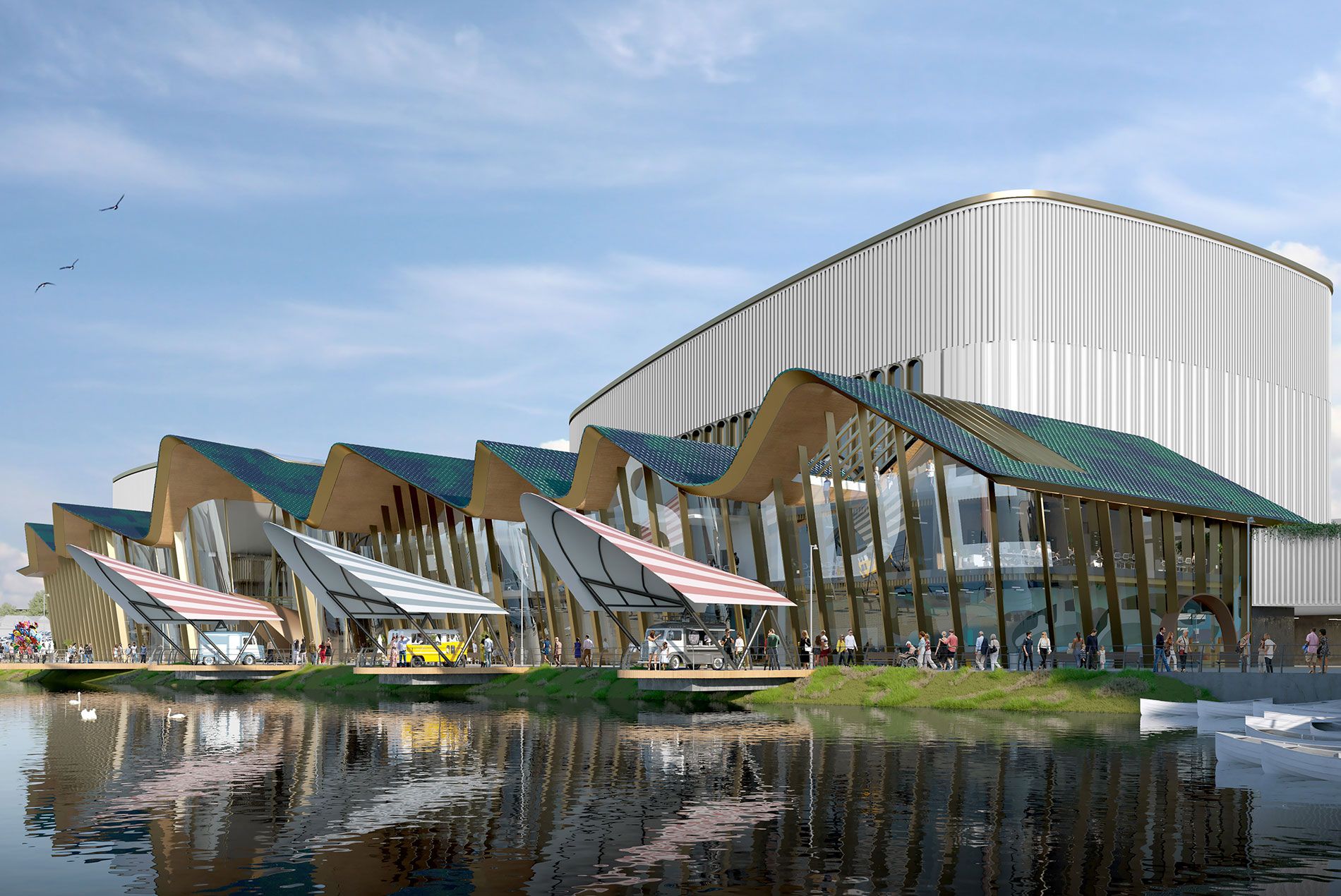
On the back side, the transparent, almost playful design interacts with the waterfront. An undulating turquoise tin roof is a nod to the water. Expanses of glass maximise views and connect visitors to the Irish Sea. Timber columns and detailing create a warm feeling. At night, the building comes alive with feature lighting that animates the facade and highlights activities in the lobby.
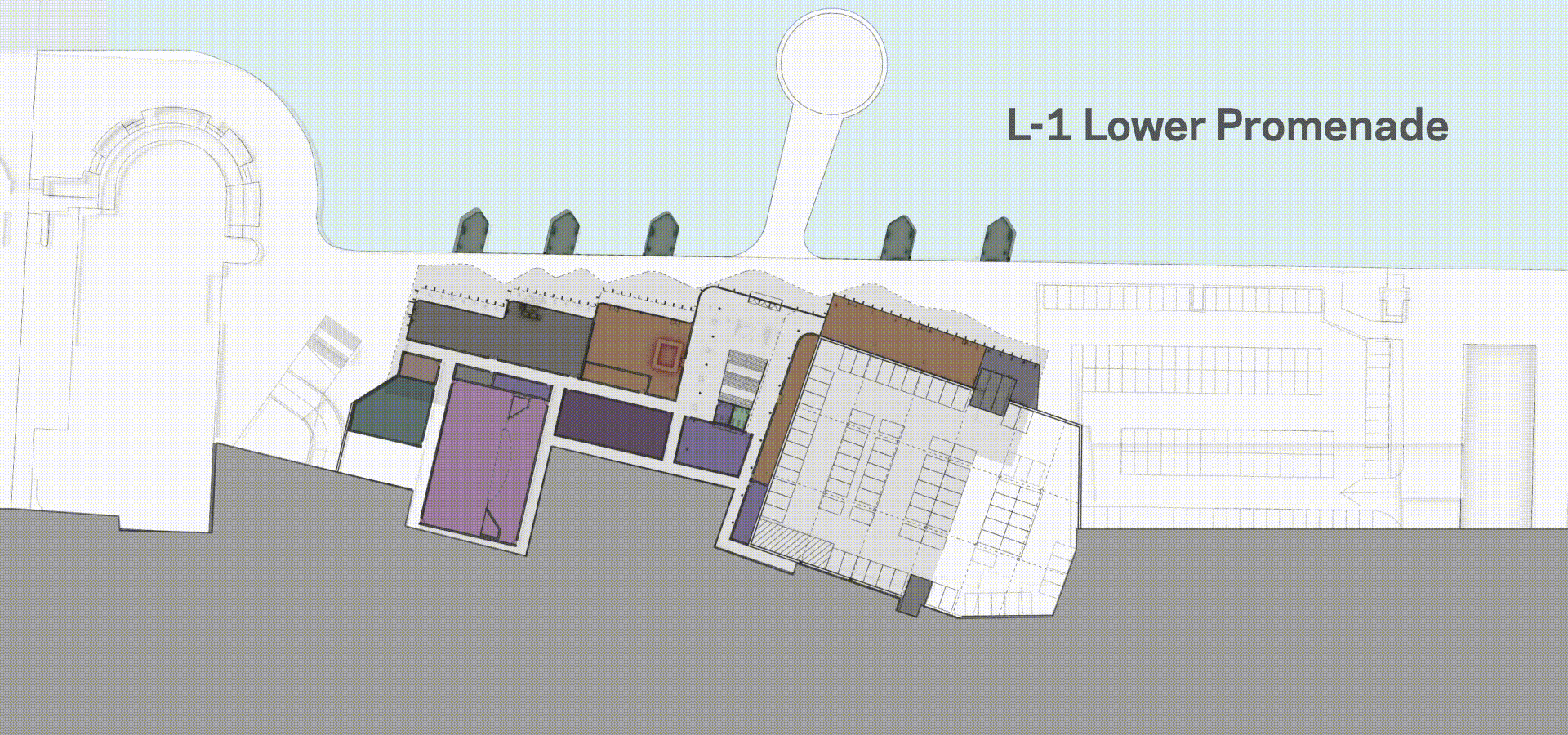
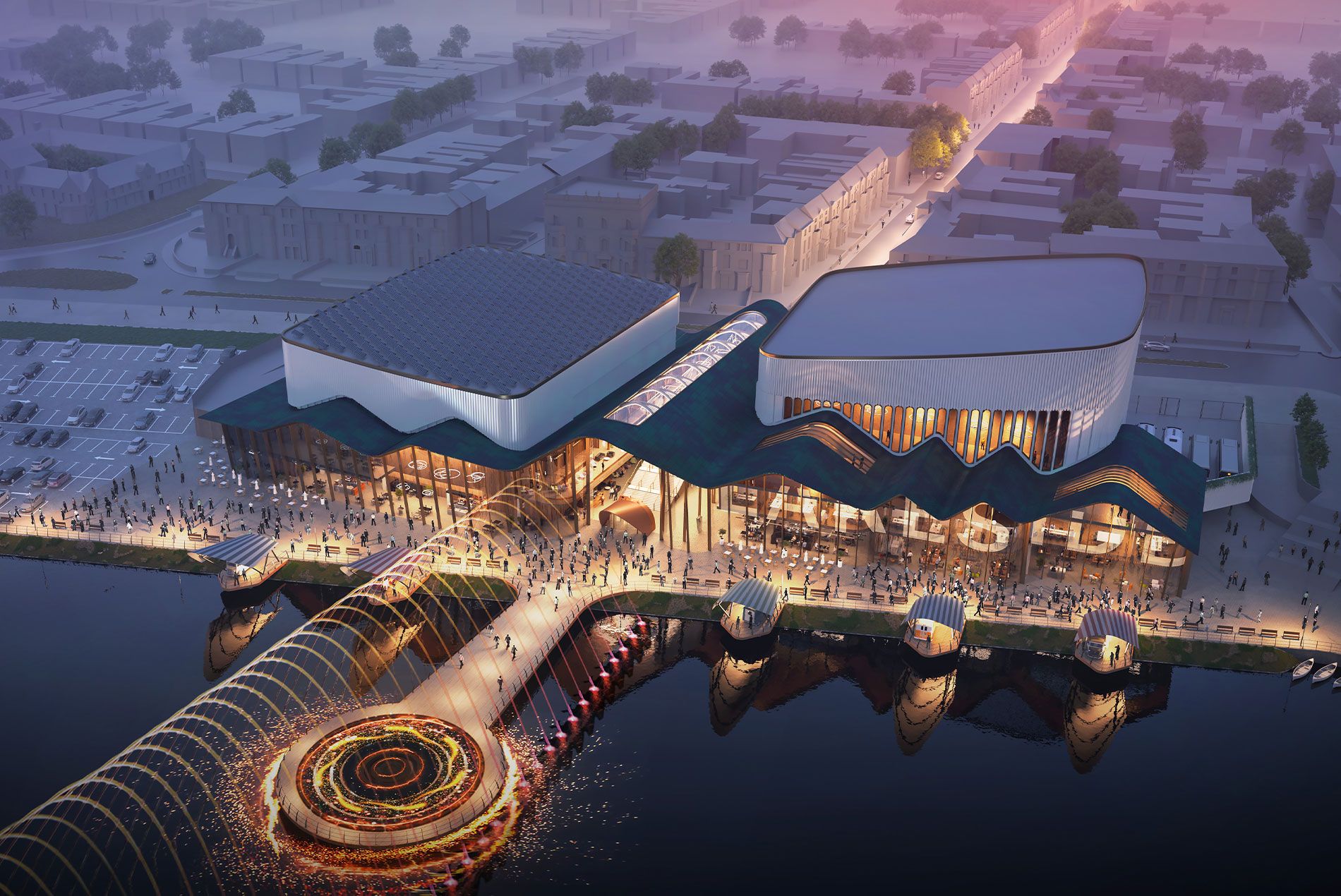
The design transforms the waterfront just beyond the building from a quiet promenade into a bustling jetty with stores, restaurants and bars.
A new pier off the promenade will house an interactive water and LED light show. Colorful striped canopies inspire nostalgia for the charming seaside towns that make up England’s history.
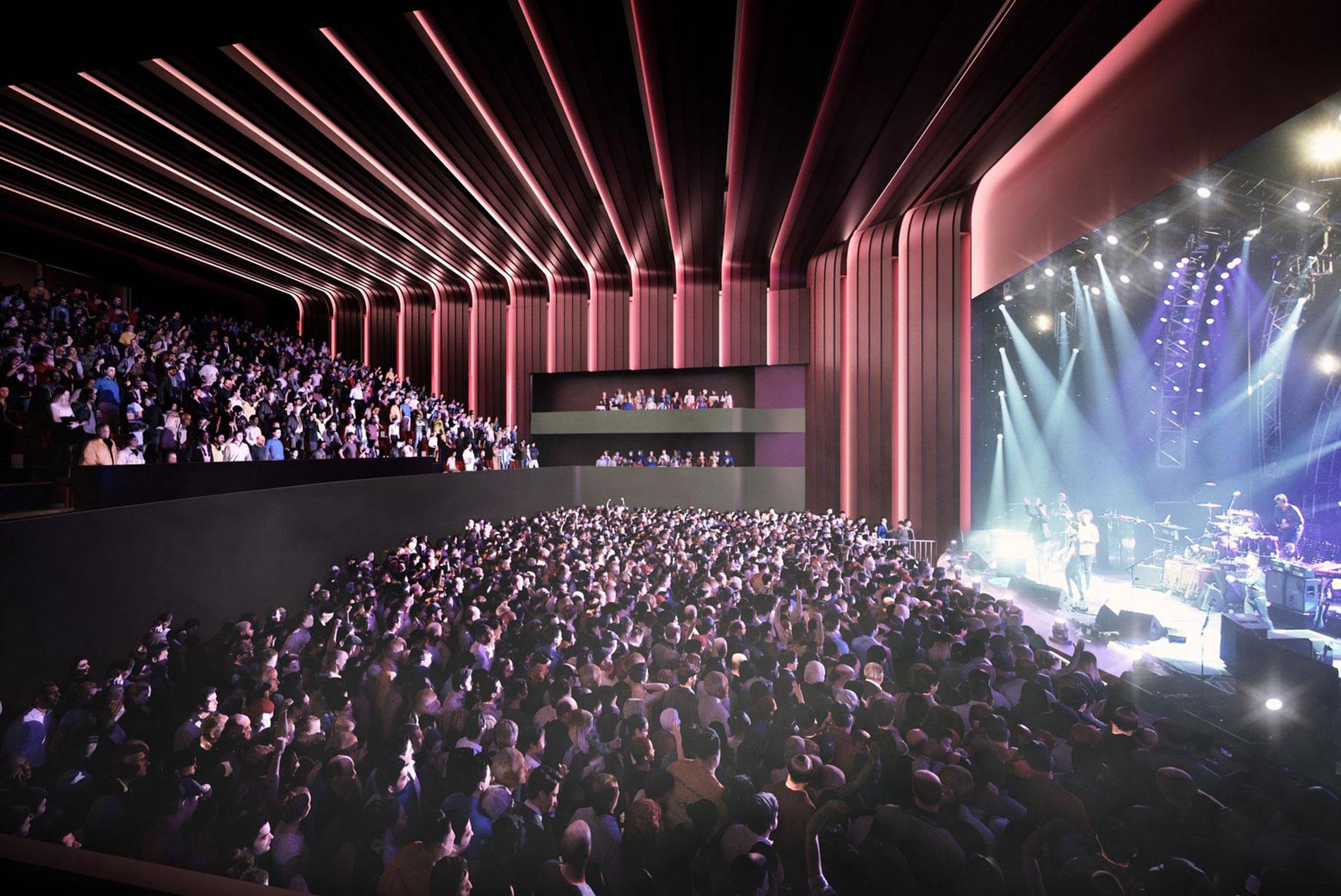
The theatre and convention and exhibition spaces can be used simultaneously.
The 1,200-seat theatre is on the street level, at the top of the sloped site.
In addition to maximising efficiencies, the dual frontage enhances the pedestrian experience. The public realm immediately surrounding the venue is free of vehicular traffic.
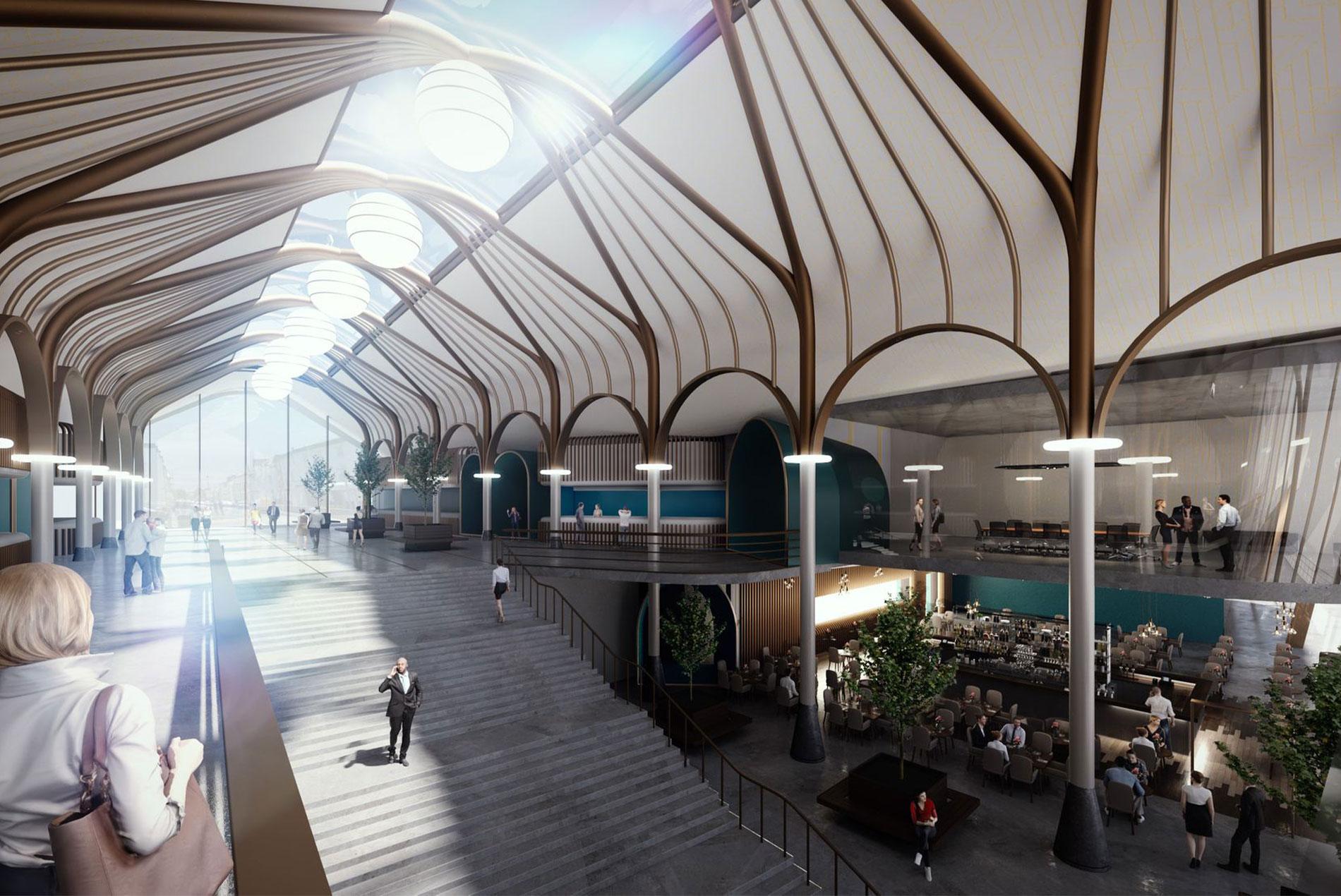
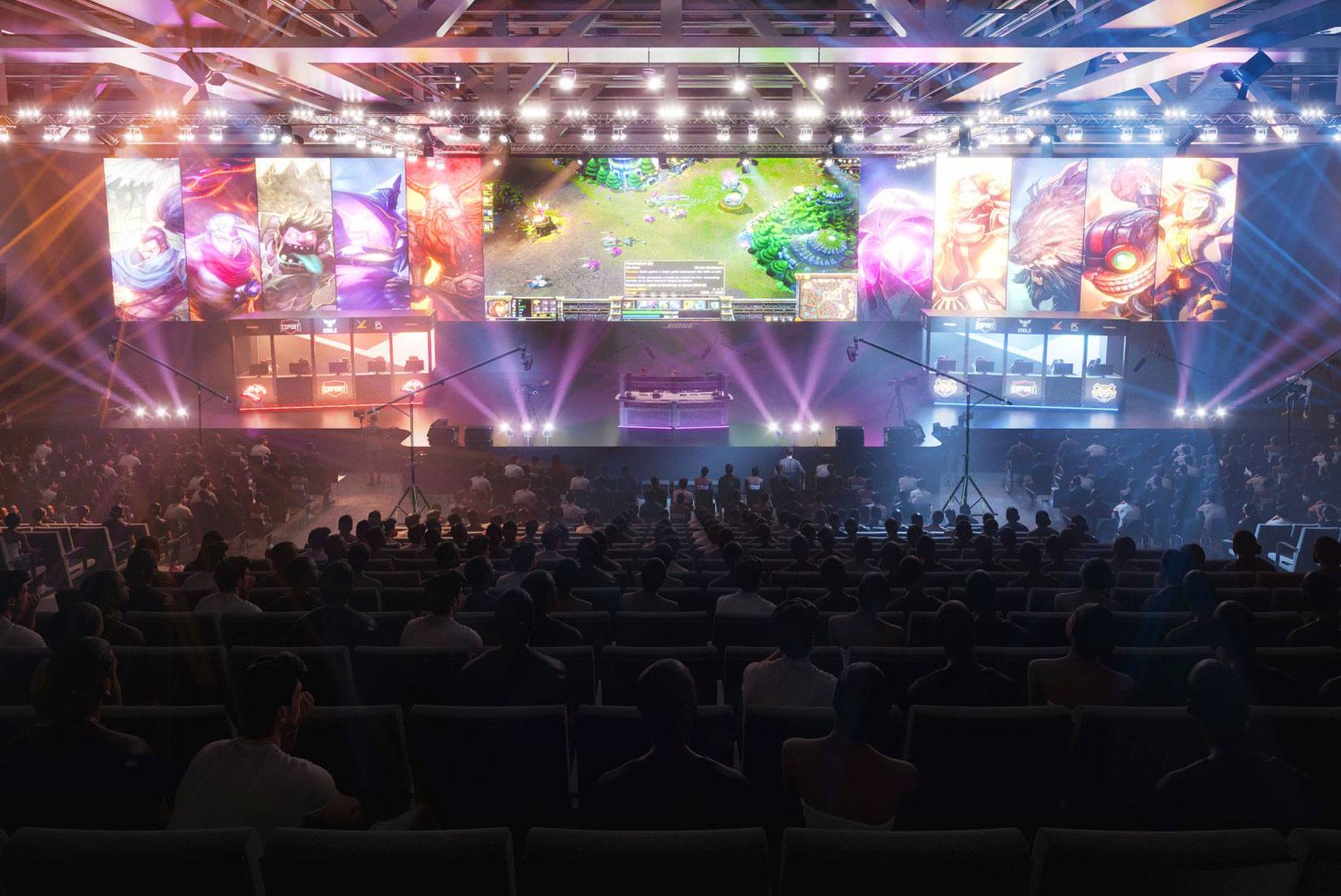
Performers and patrons are increasingly interested in healthy, sustainable venues. The design team has explored the use of many low and zero carbon (LZC) technologies.
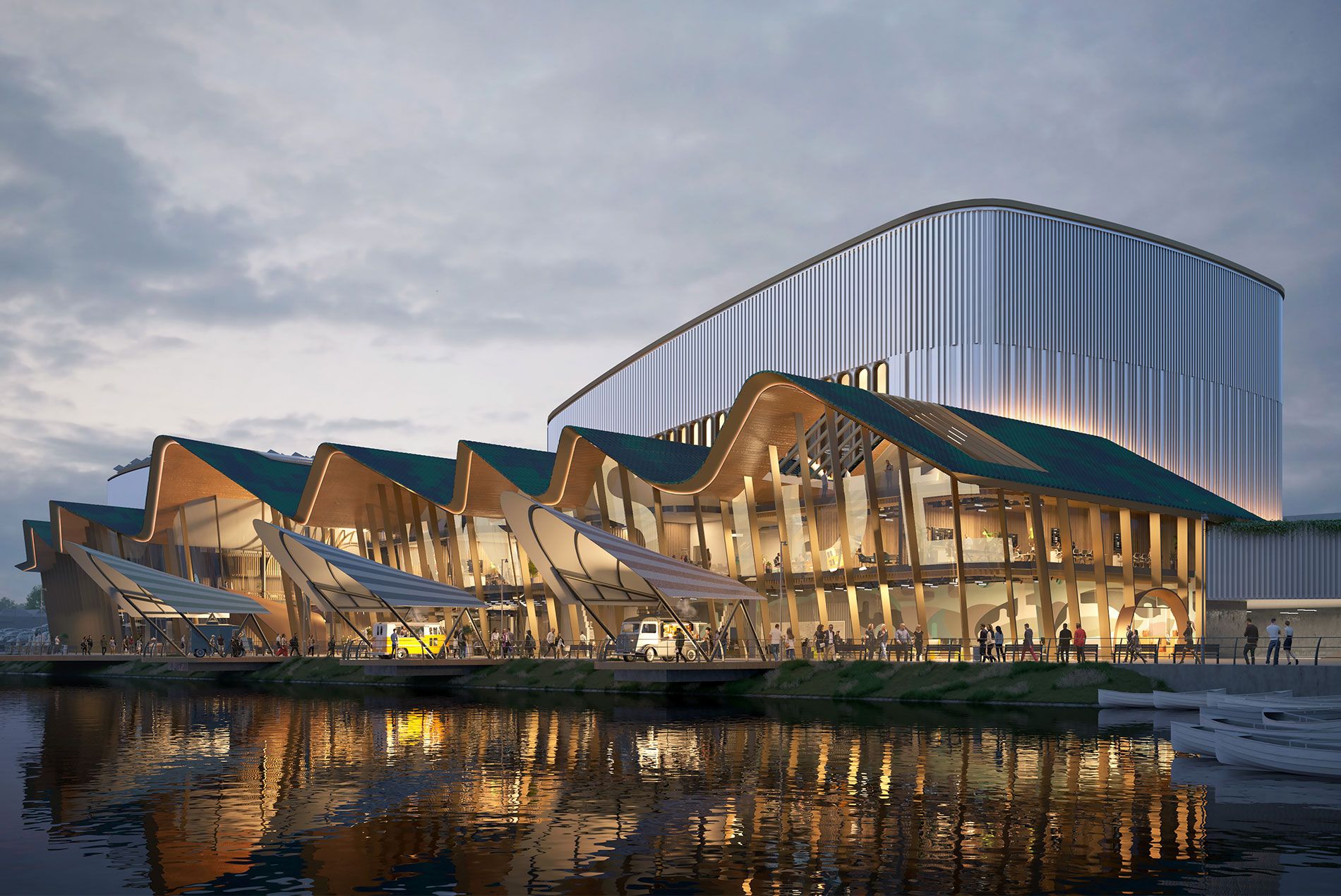
“It will be a catalyst for wider investment and development.”
— Councillor Ian Maher, Leader of Sefton Council
The multiuse venue is adjacent to an existing hotel and has easy access to the town’s transit system.
The development is expected to bring more than 230 new jobs to Southport and more than 300,000 annual visitors to the region.
